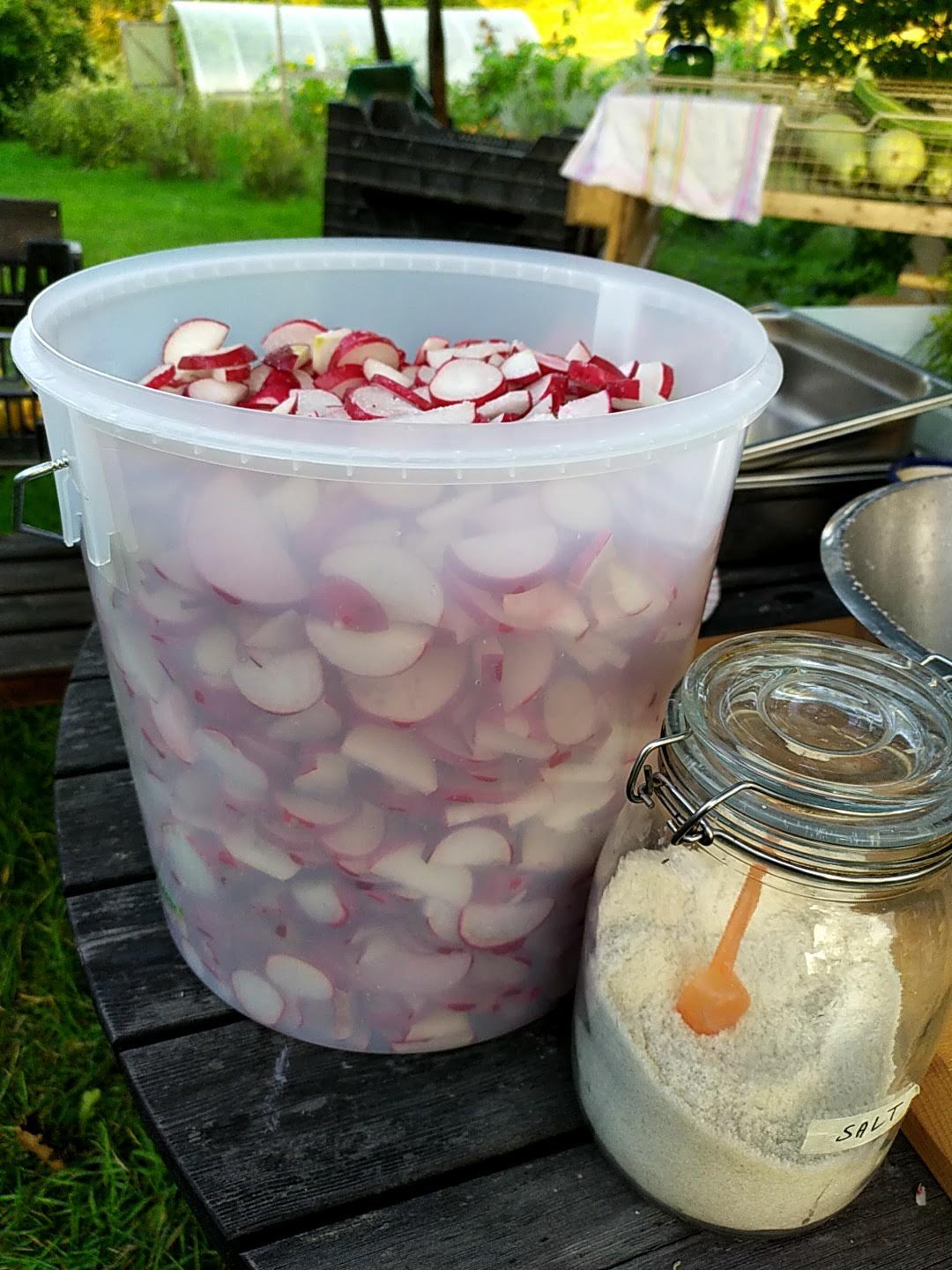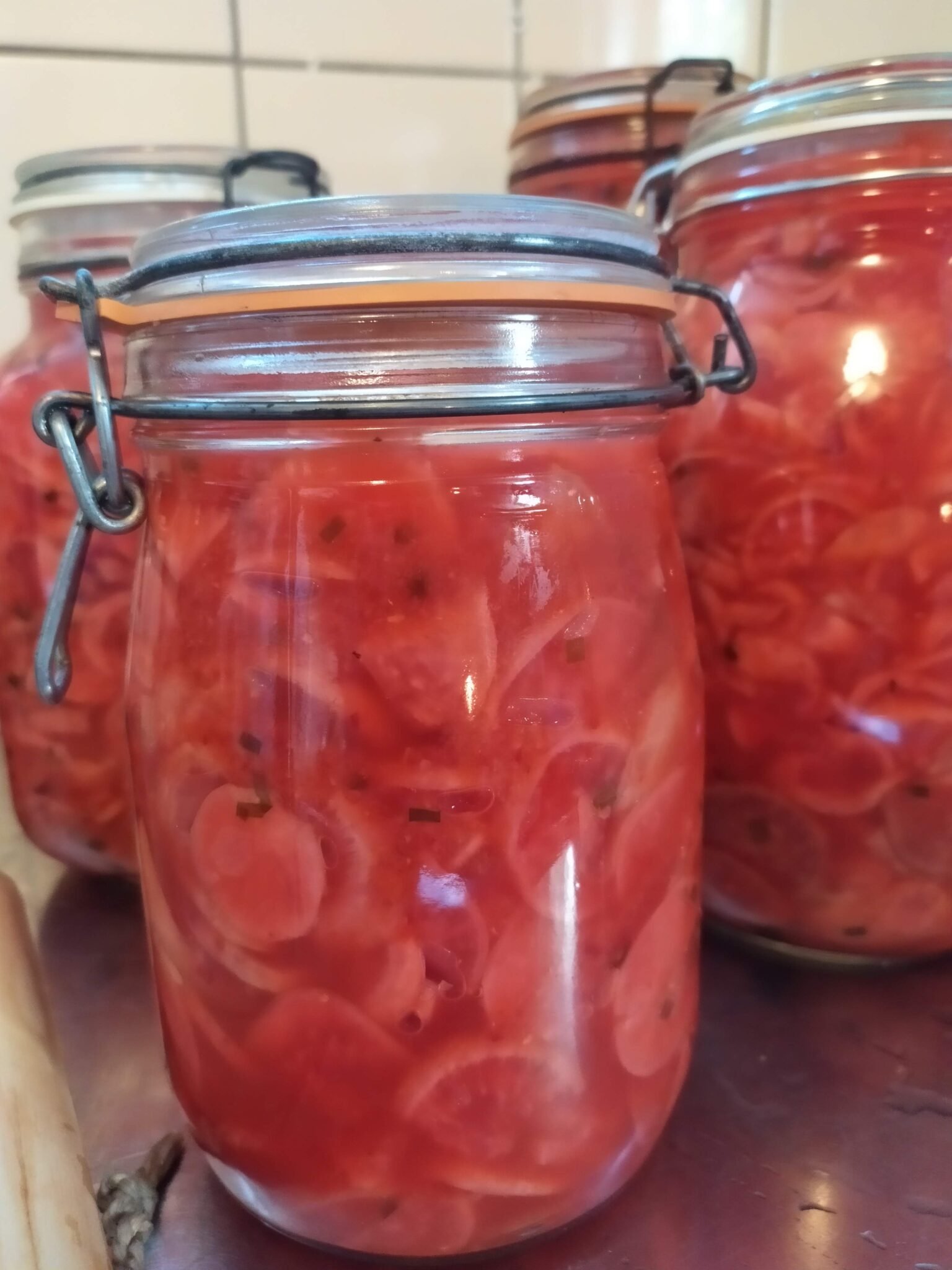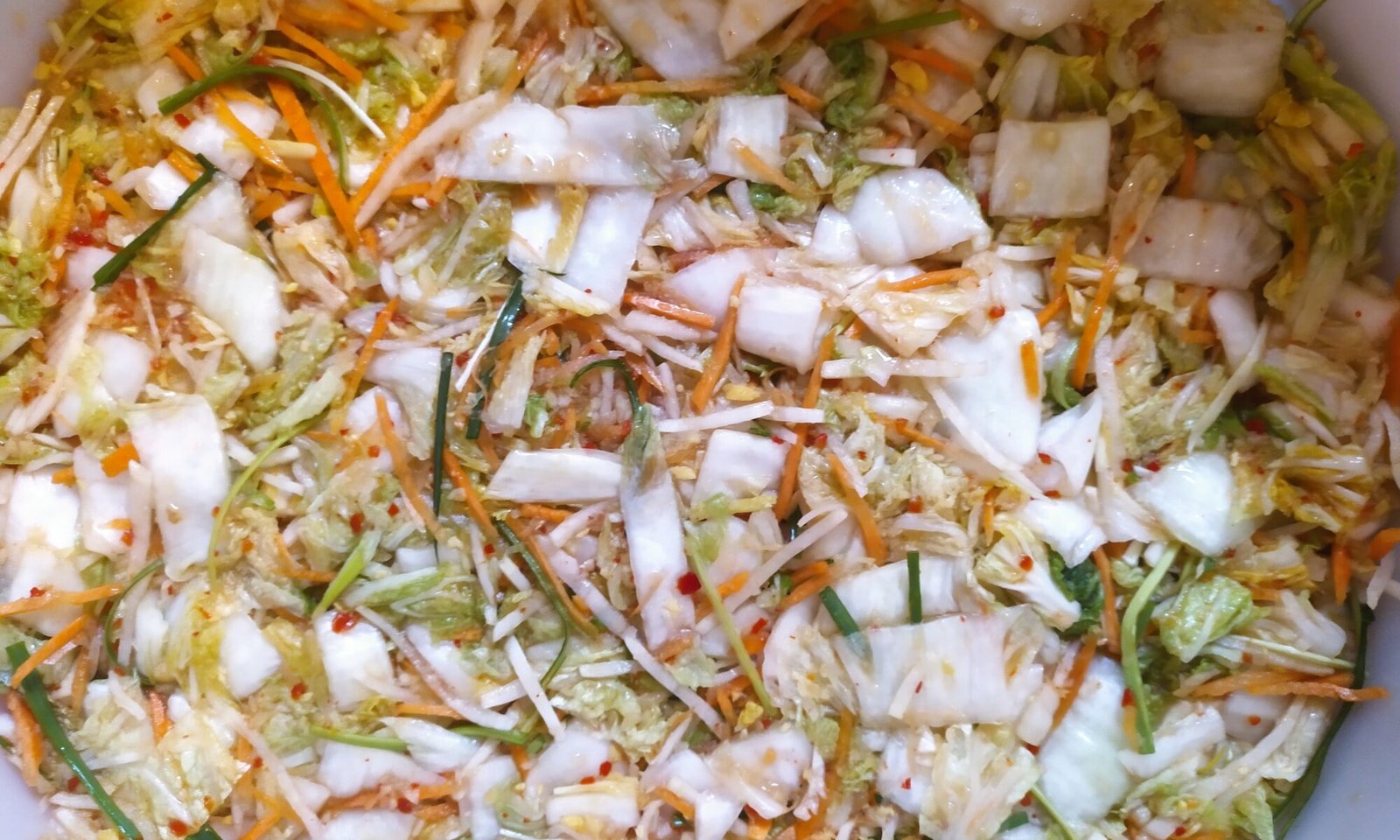What is lacto-fermentation and how does it differ from other kinds of fermentation?
Fermented foods are “foods created through the desired growth of microbes and enzymatic transformations of food components.” The international scientific association for Probiotics and Prebiotics (ISAPP).



Lactic acid fermentation is a form of fermentation, which is a processing method that utilises microorganisms instead of heat, for example. Lactic acid fermentation is driven by lactic acid bacteria or lactobacilli (which also create yogurt, buttermilk, butter, and other dairy products *) and is used to increase the shelf life of vegetables while also adding new properties such as micronutrients, easily digestible nutrients, and the beneficial bacteria that promote gut health. It is because of the presence of lactobacilli that this type of food is considered “probiotic.”
Lactic acid fermentation is an anaerobic process, which means it occurs without oxygen. Lactic acid bacteria multiply in an oxygen-free environment and can tolerate some amount of salt, unlike many other microorganisms. Some of these bacteria (the pioneers/first on the scene) produce both lactic acid and carbon dioxide as byproducts, creating an environment hostile to other microorganisms. This is one of the reasons why vegetables are protected from organisms that could cause spoilage or pose a risk to our health.
Swedish chemist Carl Wilhelm Scheele distinguished this acid from sour milk in 1780 and named it lactobacillus – the word ‘lac’ is Latin for milk.
The process of lactic acid fermentation:
Sauerkraut’s journey:
The cabbage is sliced – cell walls are cut, releasing the nutrient-rich liquid. Salt is added, which draws out even more liquid. Microorganisms that were present on the vegetable in countless numbers and variations start to multiply in the new environment of abundant and easily accessible carbohydrates. The cabbage is tightly packed into a container (glass jar, fermentation vessel, wooden barrel, etc.). The multitude of microorganisms consume the remaining oxygen in the container, and those that rely on the oxygen start to decrease. Pioneering lactobacillus bacteria, such as Lactobacillus mesenteroides, which were present on the cabbage but in small numbers, thrive under these conditions and begin producing lactic acid and carbon dioxide. In the new acidic and full of activity environment, most other microorganisms, including those that can cause health problems, disappear. After just a few days days, the next generation of bacteria, Lactobacillus plantarum, starts to flourish (though in a calmer way as they do not produce as much carbon dioxide as their predecessors), soon becoming dominant but with many beneficial colleagues. This bacterial transformation requires at least a short period of warmth for the bacteria to thrive. The optimal starting temperature is between 19-23°C.



A note on consistency
If you want your sauerkraut to be crispy, it should contain at least 1.5% salt and not be left at room temperature for more than two weeks. If you prefer it mild and tender, it should either be left for a significantly longer time – up to 2 months at room temperature – or contain less salt, barely 1%. If you’re unsure which you prefer, you can gently open the container and taste it along the way. It’s quite an experience, as it is a living process, and a lot can happen in a short time. Make sure to press everything down below the liquid surface every time you open it, and it will turn out well. Personally, I’ve started to prefer a softer cabbage, and after trying various combinations with everything from fennel to lots of garlic and thyme, I find myself liking one of the most traditional variations – caraway seeds (even though I normally deeply dislike the flavour). Cabbage, caraway seeds, and salt, nothing more.

Why is so good about fermented vegetables?
- It is beneficial to consume a lot of vegetables as they are rich in fiber, vitamins, and nutrients. Fermented vegetables can be beneficial as part of your vegetable intake.
- Fermentation is a method of preserving vegetables that makes the nutrients in the vegetables more easily available for the body to absorb.
- It is simple and inexpensive to do and can result in many delicious and exciting flavours.
- Coming in contact with a wide range of non-harmful microorganisms is believed to have a beneficial effect on our immune system and other bodily processes.
- Preparing food and participating actively in the providing food for yourself and other is highly rewarding and a lot of fun – and having fun and doing meaningful things is great for well-being.
- Fermented vegetables have been vital for people all around the world, throughout history, not least in times of crisis.


